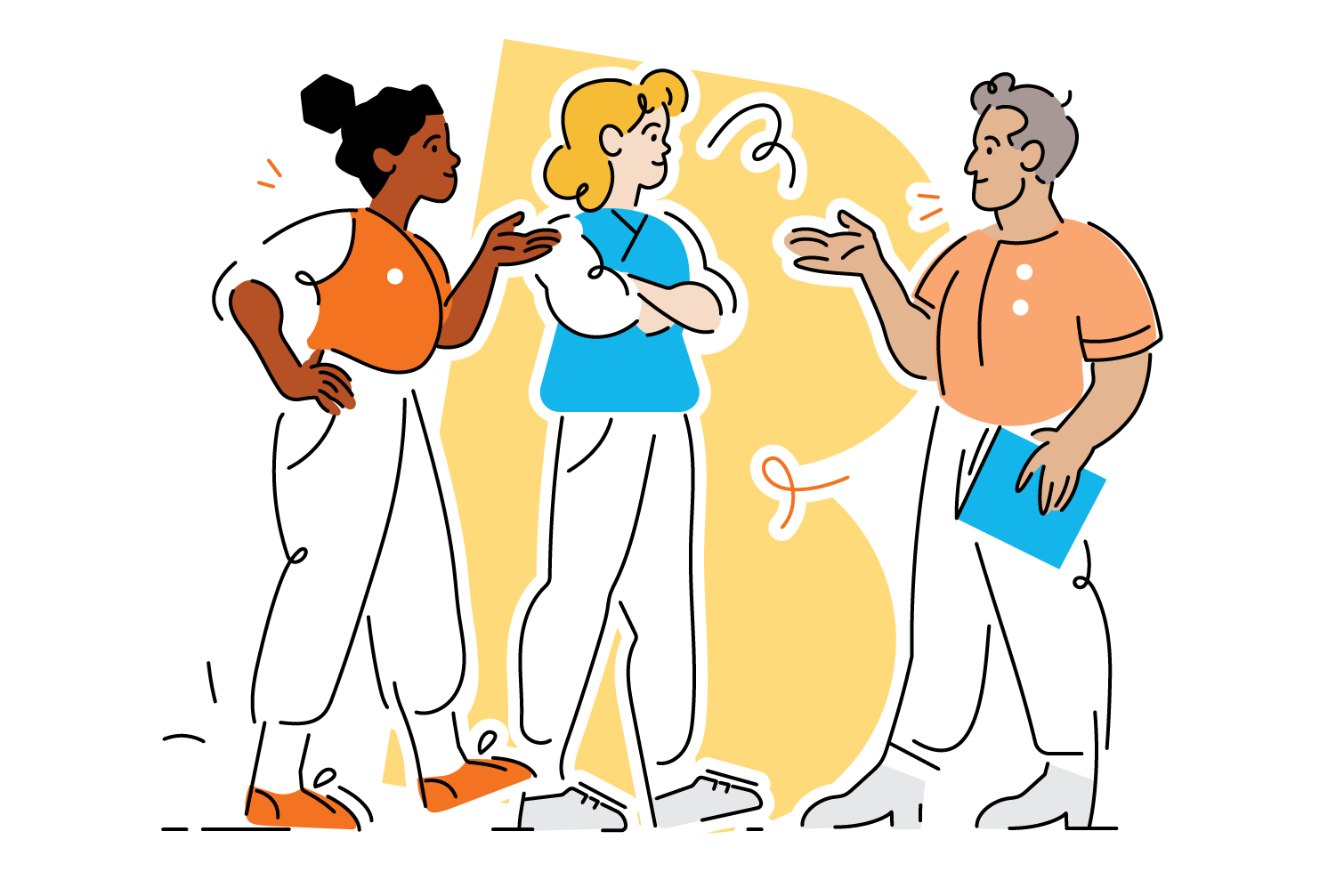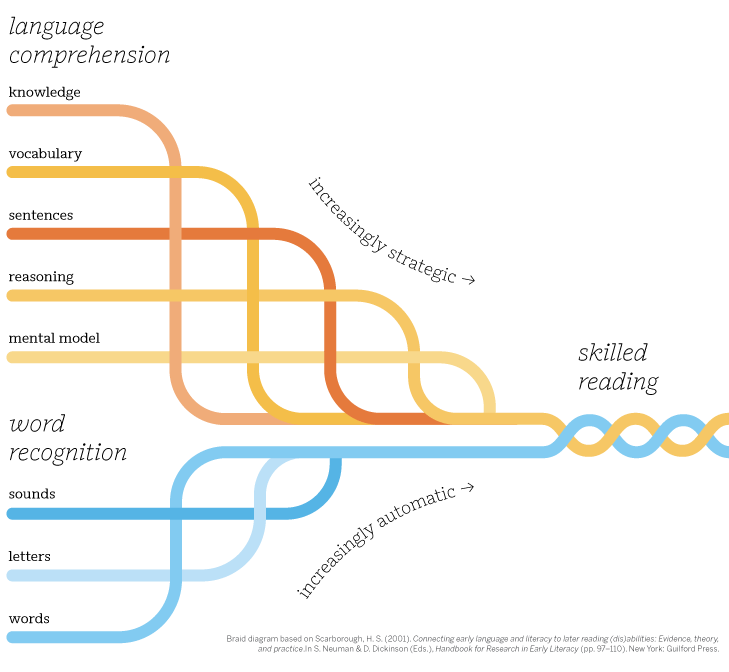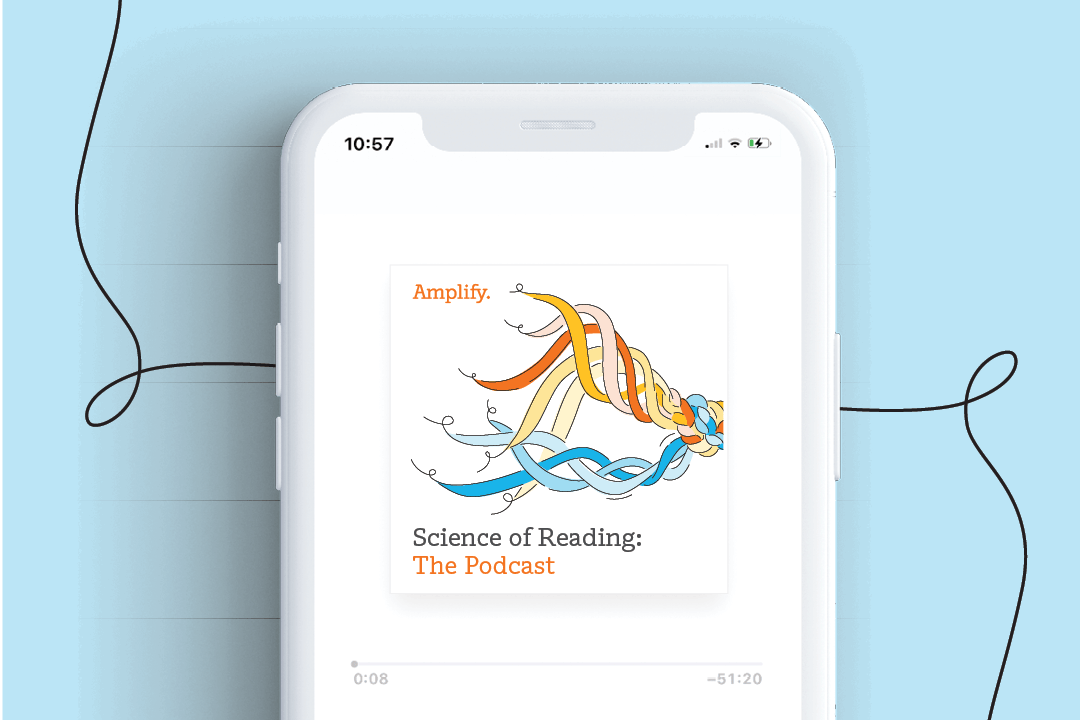
The science of teaching reading encompasses decades of research and a body of literature that could likely fill its own library.
That’s why we called in the experts to get the info you need to break it all down, set yourself up for change management, and navigate a successful shift to the Science of Reading in your school.
In other words, welcome to a recap of our recent virtual event! Here, we’ll offer some of the key takeaways, including:
- What teachers should know about the Science of Reading.
- Why knowledge-building is critical and a matter of equity.
- What to look for in a Science of Reading curriculum.
- Where to continue Science of Reading professional development.
- How to create an action plan that will drive change in your district.
- Why making this shift can deliver life-changing results.
“We’re here to talk about how you as leaders are making the shift to high-quality instruction grounded in the Science of Reading, and all the wonderful things happening across the country and state, and where the work actually happens, in the classroom.”
We hope you’ll be inspired to dig into for you—and we hope to see you at the next symposium!
Session 1: , with Kymyona Burk, Ph.D., senior policy fellow at ExcelinEd
According to NAPE, our lower-performing students struggle with reading more now than they did almost a decade ago. “This is everybody’s problem. We are all represented at the bottom, though perhaps disproportionately for some relative to our representation in the population,” said Kymyona Burk. “Nonetheless, we’re all there. This is not a Black or white issue, or a gender issue. This is an issue where we can come together to solve this literacy crisis for all of our children.”
And we have to, according to Burk, who framed reading as an education and economic issue. “Children who are struggling readers become adults who are struggling readers,” she said. And this makes them less able to participate in the job market, and or even read with their kids, thus continuing the cycle.
The good news? We really can do this. “Illiteracy is one of the most solvable issues of our time,” Burk said.
How? Burk detailed the following necessary shifts:
- Build knowledge: What is the Science of Reading?
- Strengthen practice: This shift involves four phases of system change: (1) Initiating Action, (2) Organizing for Impact, (3) Early Execution, and (4) Sustaining Impact.
- Monitor progress: Refine as needed.
Burk also outlined best practices and provided examples of these shifts and changes, encouraging leaders to get into hands-on involvement and develop collaborative buy-in from the beginning.
and .
Session 2: , with Natalie Wexler, author of The Knowledge Gap
What’s the main idea in the paragraph below?
Much depended on the two overnight batsmen. But this duo perished either side of lunch—the latter a little unfortunate to be adjudged leg-before—and with Andrew Symonds, too, being shown the dreaded finger off an inside edge, the inevitable beckoned, bar the pyrotechnics of Michael Clarke and the ninth wicket.
If you don’t know a lot about cricket, you might have a bit of a hard time with the answer!
That’s how speaker Natalie Wexler starts to illustrate that comprehension doesn’t work in a vacuum; it requires background knowledge.
In fact, she argued:
“A knowledge-building curriculum that begins in kindergarten and connects the various aspects of literacy, listening, speaking and writing can enable all students to reach their full potential.”
She outlined these three key ways to get there:
- Organize classes not by reading level, but by topic. Once students have background knowledge about a topic, they can understand at a higher level.
- Spend plenty of time on social studies and science topics. These subjects have the potential to build vocabulary and knowledge that fuels comprehension.
- Have students write about what they’re learning. This boosts their retention and comprehension.
and explore .
Session 3: , with Sonia Cabell, Ph.D., associate professor of education at Florida State University
Knowledge is fundamental to reading, and a content-rich curriculum helps build it.
But, according to presenter Sonia Cabell, it takes a teacher to bring it all together.
That includes recognizing and activating the knowledge students bring to the classroom. From Cabell’s presentation: “Every reader in your class possesses background knowledge that can be leveraged to advance reading…when teachers are strength-spotters rather than deficit detectors, they recognize the academic and cultural background knowledge that their students already possess”
Teachers also shape learning by helping transfer knowledge from a high-quality, content-rich curriculum to the real world. How? High-quality conversations, where students are active participants and teachers are responsive partners.
These may include interactive read-alouds and Strive-for-Five conversations, Cabell said. Starting with what children say, these take place over five turns, with the teacher responding in ways designed to stretch student talking, thinking, and reasoning, as well as other skills that underpin reading success.
You’ll find more specific, actionable approaches in Cabell’s and accompanying .
Session 4: , with Mitchell Brookins, Ph.D., education consultant and former school administrator
We’ve established the importance of background knowledge. But, as Brookins pointed out: “Students integrate their background knowledge in helpful, and sometimes unhelpful, ways.”
Consider this brief passage: “Jazz isn’t music merely. It’s a spirit that can express itself in almost anything. The true spirit of jazz is a joyous revolt from convention, custom, authority, boredom and even sorrow.”
One student might read “spirit” and think “ghost.” Another may read “revolt” and think “Civil War.” In short, your students may not be on the same page.
“In this moment, you have to ground yourself in evidence-based practices for comprehension instruction. Later reading comprehension is predicated on the ability to construct a coherent and integrated representation of meaning of the text.”
In other words, the ability to construct a mental model. We need to help students build mental models, linking coherent knowledge with writing skills “so that children can lift the words off the page,” said Brookins
He offered a few specific ways to make that happen: creating visual organizers to collect and apply existing knowledge, identifying anchor words, deconstructing long sentences, and more.
“Some children may need three or four different activities to get the content to stick,” he said. “So when it comes to complex text instruction, there are multiple things you’re going to have to do to ensure that children leave with an accurate representation of the text.”
That level of effort can go a long way, and it must. “As educators, we have to agree that high illiteracy rates have to end,” Brookins said. “And as we turn the tide in our classrooms, our districts, and states, our children will understand, believe, internalize, and live out this truth, [that] literacy is liberty.”
Find more specific, actionable approaches in Brookins’s and accompanying .
Session 5: , with Claude Goldenberg, Ph.D., professor of education at Stanford University
What do we know about how children learn to read when they know the reading language?
How is that process similar to—or different from—how children learn to read as they’re learning that language?
And should teachers teach differently in each case? How so?
Speaker Claude Goldenberg explored these questions and more in his session. Spoiler: “Kids who don’t know the language don’t have the phonology and the semantics already part of their knowledge systems,” he said. “They need to learn the sounds of the language. They need to learn the meanings of the words.”
Goldenberg’s bottom line? “The Science of Reading applies to language learning.”
He had the following guidance for teachers of multilingual/English learners:
- Teach the five foundational skills explicitly: phonemic awareness, letter-sounds, decoding, fluency, and comprehension.
- Make sure content and instructions are clear and comprehensible.
- Provide English language development instruction and opportunities that directly support the reading instruction.
Moving forward, Goldenberg said, “[Students] will need continued additional support as reading challenges get more complex, and foundations remain foundational.”
Dive into the brain science and lots more specifics in the and slide deck.
Session 6: , with Kareem Weaver, co-founder and executive director of FULCRUM
This we know: Literacy and knowledge are civil rights. How do we make sure that all kids have access to this right?
In his session, Kareen Weaver argued that we have to add dimension to our current definition of equity, which often boils down to “fair and impartial.” But that’s mostly about how you treat someone, noted Weaver. “My understanding of equity is about outcomes,” he said. “We have to have results and outcomes for kids, and those who serve kids, as part of the equation.”
And this so-called “equity” isn’t helping if goals aren’t being reached. “Let’s say 50% of white kids are reading and 20% of Black kids are reading, that’s a 30% gap,” he explained. “But if 50% of Black kids were reading, I would still be yelling and shouting, because that’s not good. Excellence has to be the standard.”
Weaver proposed an expanded definition of equity—and described the path to get there. “Equity opens up freedom. Not just the freedom from oppression, but the freedom to do things,” he said.
The four key components of his approach:
- Access to knowledge matters.
- Literacy is the key to access.
- Consistency with all elements matters.
- Change management is critical.
“If you have those four things,” Weaver said, “now we’re talking about equity.”
Inspired? Intrigued to learn more? and .
More ways to explore:



